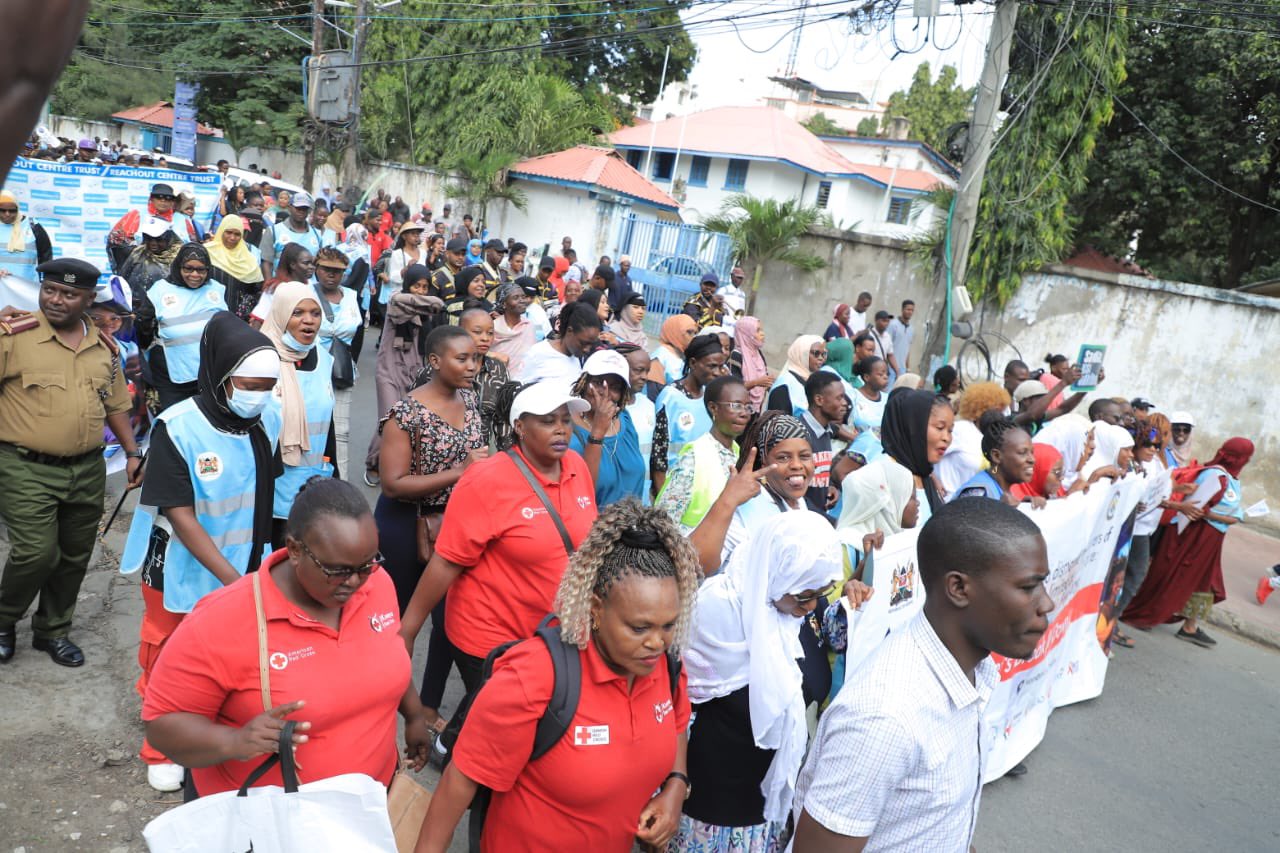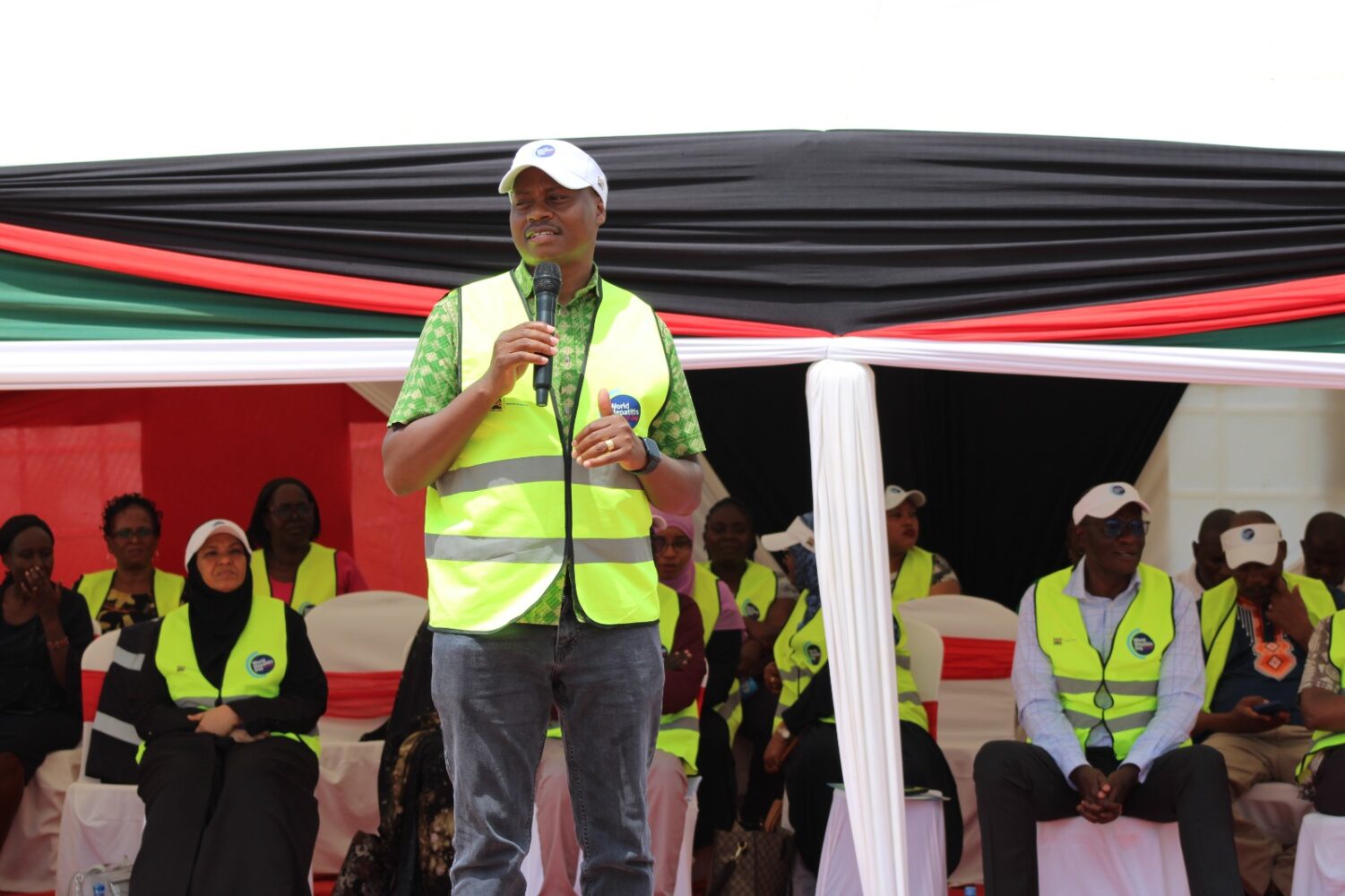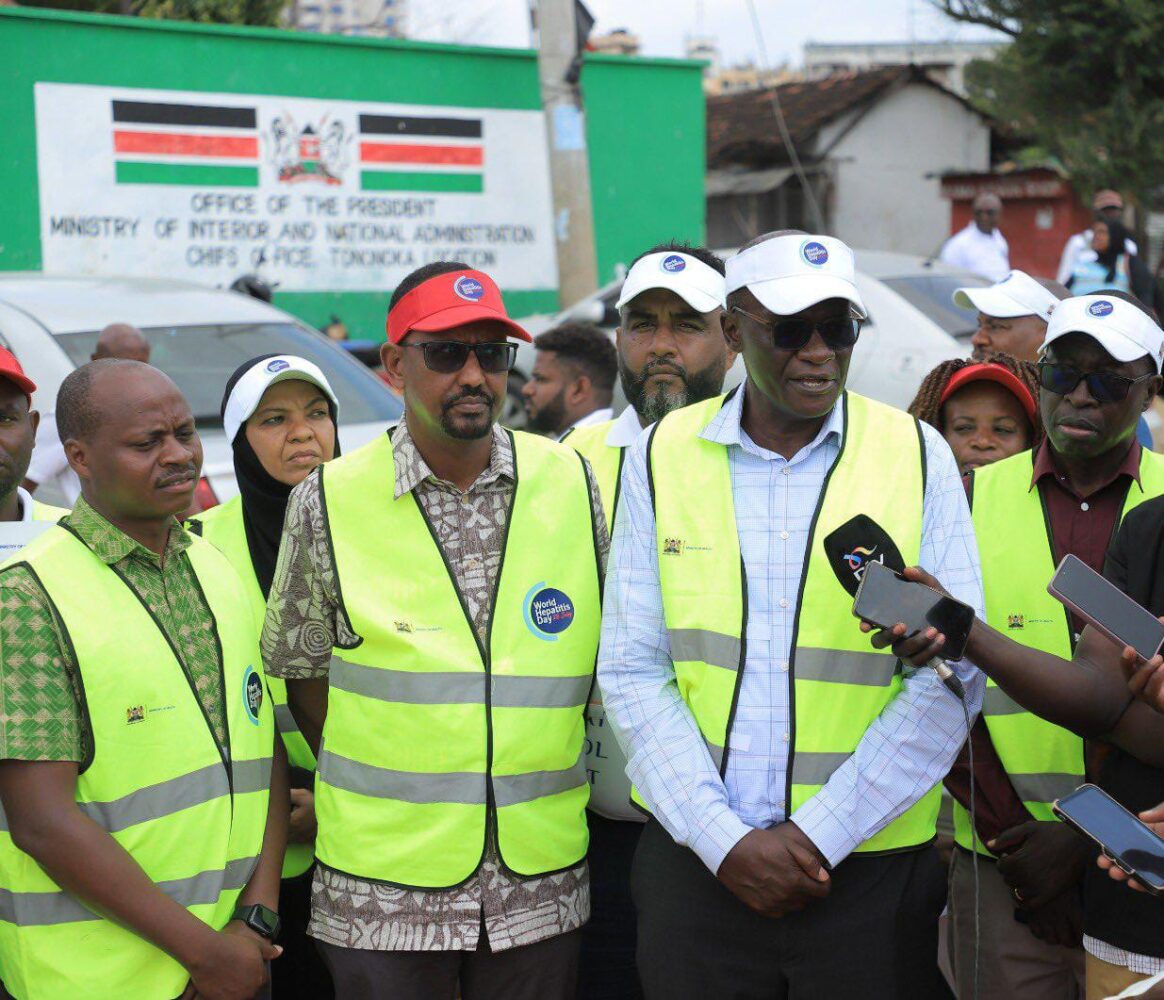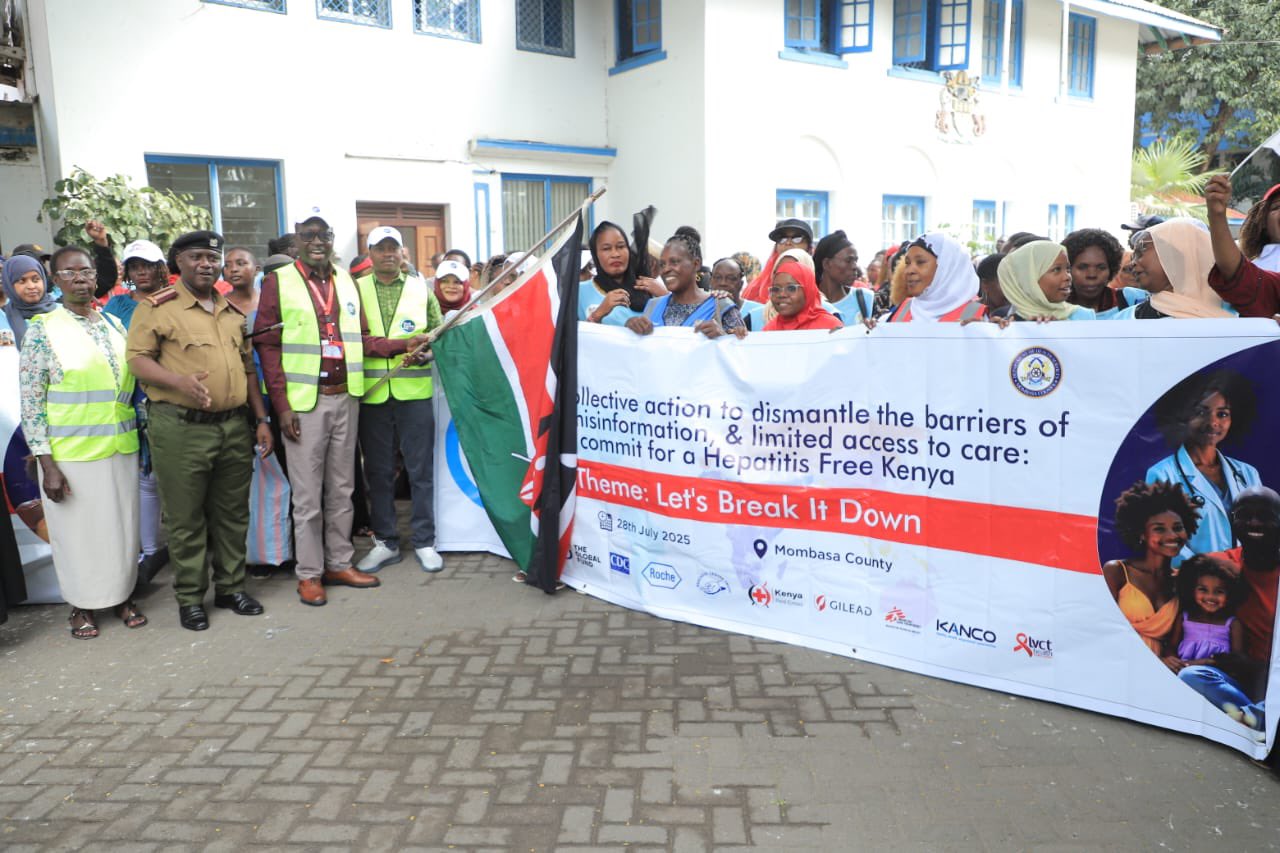Hepatitis is becoming a menace in the Coast region, reporting exposure prevalence as high as about 25% of which close to 60% being chronic infections.
Kenya marked World Hepatitis Day in Mombasa under the theme ” Let’s Break It Down,” bringing together health workers, people living with Viral Hepatitis, Community Representatives among others.
In Africa, 124,000 Kenyans die annually from Hepatitis – related complications. Shockingly, 4.5 million African children under the age of five live with chronic hepatitis B accounting for 70% of the global burden in this age group.

Statistics show that 9 out of 10 children exposed to Hepatitis develop chronic illness. For elimination to be possible by 2030, the health of women and children must be a priority.
Under the Universal Health Coverage (UHC) the Ministry of Health is reinforcing commitment through; ensuring treatment of Hepatitis B by use of vaccination and harm reduction programs for Hepatitis C, accelerating the Triple Elimination Agenda of HIV, syphilis and Hepatitis B in pregnant women and children, integrating Hepatitis services into SHA’s essential benefits package, uninterrupted access to treatment, investing robust data system to ensure no one is left behind in the hepatitis response and increasing awareness of hepatitis to everyone.
Healthcare workers are training to enhance identification, linkage and clinical management of hepatitis cases. Treatment is available using effective Directly Acting Anti – Virals (DAA) regimens which is a 3-month therapy with proven 90% cure rate.
Alcohol and substance use remain deeply intertwined with hepatitis vulnerability. Over 10% of Kenyans aged between15 – 65 years are affected by alcohol use disorders, with 60% presenting with severe dependence. Shockingly, NACADA data shows that one in five adolescents had used a substance by 2019.

Dr Andrew Mulwa called on Mombasa County and the rest of the country to build on this momentum. As guided by NASCOP, kindly integrate hepatitis elimination targets into county health strategies and allocate the necessary resources to sustain these efforts. A hepatitis-free future is possible, but only if we match commitment with action.
In his speech, Director General, Health, Dr Patrick Amoth, EBS, stated “This year’s World Hepatitis Day theme, “Let’s Break It Down,” is more than a slogan- it is a rallying cry.”

The call for the day was for a collective action to dismantle barriers of stigma, misinformation and limited access to care. By doing this, Hepatitis will not only reduce in our country but people living with it will feel the love around them and have the strength to face another day.











